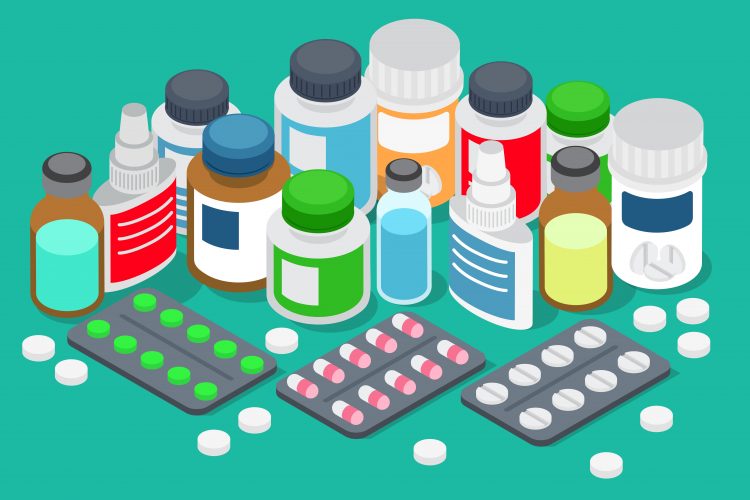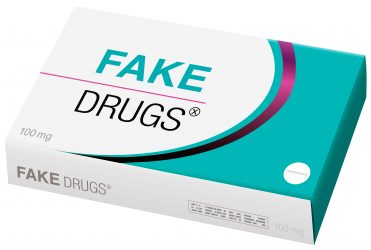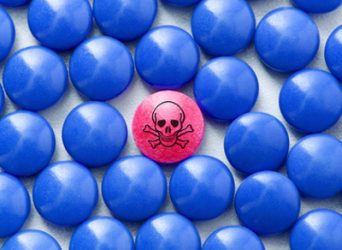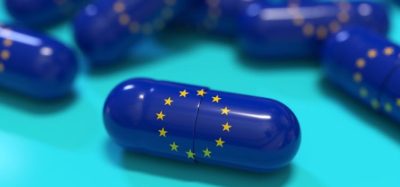Tackling fake pharmaceuticals: an industry united against counterfeit products
Posted: 25 July 2022 | Rich Quelch (Origin) | No comments yet
The market for counterfeit pharmaceutical products remains strong, with dishonest actors proving perennially tenacious. Here, Rich Quelch offers guidance on the technologies and practices that are helping to impede fraudsters.


While the global trade of fake pharmaceuticals has long been a threat, the COVID-19 pandemic sent the fraudulent market into overdrive. Criminals were able to capitalise on supply chain disruptions, industry regulations being in transition and the urgent global demand for medical products; consequently they thrived.
A week before COVID-19 was even declared a pandemic by the World Health Organization (WHO),1 Interpol’s Operation Pangea XIII seized counterfeit virus interventions2 worth $14 million worldwide.
As the world now looks to a post-pandemic future, despite the counterfeit medicine trade showing no signs of slowing, industry bodies must come together to tackle the production and trade of fake products.
Defining ‘counterfeit’ and ‘falsified’
To appreciate the scope of the challenge facing the pharmaceutical market, as well as patients across the globe, we must understand that there are two distinct threats – ‘counterfeit’ and ‘falsified’ medicines.
The European Medicines Agency (EMA) defines counterfeit medicine as being “made by someone other than the genuine manufacturer, by copying or imitating an original product without authority or rights and [infringing] trademark law”.
As the world now looks to a post-pandemic future, despite the counterfeit medicine trade showing no signs of slowing, industry bodies must come together to tackle the production and trade of fake products.”
These products are disguised as legitimate branded medicines and it can be difficult for those across the supply chain, as well as patients, to detect counterfeit products from authentic originals.
Consequently, pharmaceutical manufacturers risk their reputation if impersonating products fail to deliver the expected quality or health impact.
There is also the challenge of falsified medicines – the fake, unauthorised medical products that make their way into the market. These may be mislabelled or produced in fake packaging and, most dangerously, there is no regulation around their manufacture.
This means falsified medicines may contain the wrong ingredients or low levels of the active ingredient – a terrifying prospect for a global consumer base reliant on medical treatments.
Essentially, both counterfeit and falsified medicines pose risks to public health and threaten to undermine the healthcare system and pharmaceutical industry.
An industry growing in pharma’s shadow
The latest figures suggest the pharmaceutical market is worth over $1.27 trillion3 worldwide. However, as the legitimate market continues to grow to meet the demand for a gold standard of healthcare for patients worldwide, so too does the counterfeit market.
In fact, the most recent estimate from the World Customs Organization places the global fake pharma market at $200 billion.4
Frustratingly, it is the very challenges fuelling the fake medicines market that fraudulent products also seem to exacerbate – global health inequalities. This vicious circle is driving increasing demand for cheaper, less-regulated medicines.


For those in lower-income and developing countries, counterfeit or falsified medicines represent a seemingly accessible solution, with fraudulent markets undermining the cost models developed by legitimate pharmaceutical manufacturers which reflect and offset the regulatory processes needed to bring products to market.
However, treatment via these medicines, with unchecked and unverified ingredient profiles, simply acts to widen the growing health gap. With the consumption of ineffective medicines comes a resulting demand for further treatment and, consequently, the opportunity for greater exploitation.
Similarly, in developed markets, there is a growing threat of fraudulent online marketplaces trading fake medicines. Criminal networks are penetrating established digital and ecommerce channels, benefitting from their trusted authenticity and authority to distribute fake products to unsuspecting patients.
According to the latest WHO estimates in 2015, this duped consumer base accounts for 50 percent of all online drug purchases.5 Additionally, even if this proportional value has remained consistent over the last seven years, the sheer increase in the volume of medical transactions alone will have seen a drastic rise in the consumption of fraudulent products.
What is clear is the need for a unified and targeted approach to disarming the fake pharma market, with each company and country addressing their own vulnerabilities. But what exactly does this look like?
The first line of defence
For pharmaceutical manufacturers, the primary solution has long been to build anti-counterfeiting technology directly into medical packaging – providing a convenient method for tracking products across supply chains as well as visual authenticity for the consumer.
A significant advancement in worldwide standards for mass serialisation on packaging came in 2019 when two important regulations came into force – the EU’s False Medicines Directive (FMD) and the US’ anti-counterfeiting protocol, ‘The Drug Quality and Security Act’ or DQSA.
Both regulations focus on connected approaches to authentication, with all agents across the supply chain expected to contribute to the tracking of legitimate products. The EU’s FMD requires complete product traceability from manufacturing to decommissioning, rather than placing the burden of authentication on any single stage of the process. Similarly, the DQSA also requires authentication at every supply-chain juncture, including wholesalers.


The challenge, however, is that criminals are only ever one step behind. Each new development in product-level coding only enjoys a few years in the sun before fraudulent manufacturers produce counterfeit copies and bypass security protocols.
As a result, the development of advanced packaging-level tokens has led to watermarking techniques; invisible, encoded data that requires specialist verification software. This technology proves difficult to replicate as it is invisible to the human eye and its unique data is required throughout tracing and decommission to verify against interference.
Similarly, the development of holograms – visible only behind each pill/capsule cavity on the back of blister packs – is preventing fraudulent replication while providing an efficient track-and-trace platform.
Plus, as these security assets are invisibly coded, they allow for prime packaging real estate to be spent on further safety information, representing a potential opportunity for greater awareness and education around falsified medicines.
Supply-chain visibility
The growing complexity of supply chains – due to increased moving parts and geographies, faster lead times, limited visibility and greater product variability – creates havoc for anti-counterfeiting efforts. More complexity brings more vulnerabilities for criminals to exploit.
For this reason, efforts to eliminate fraudulent activity are largely focused on increasing visibility across the supply chain; offering birds-eye and granular views of product journeys and reducing the opacity that surrounds each stage of the process.
This includes cloud-based tracking and perennial encryption technologies that allow for comprehensive tracking from collection to consumption. For manufacturers, this allows for greater protection of products courtesy of real-time tracking data and the ability to refine and secure supply chains by spotting weak links.
the war against fraudulent medicines will never be over and actors across the supply chain have a responsibility to continue advancing anti-counterfeit methods”
Thus, products are not simply authenticated at any single stage but can be retrospectively scrutinised for peace of mind. Revealing any unauthorised journeys or interventions helps to ensure patient safety and allows manufacturers to reap the rewards of cost savings and reputation management.
Moreover, drug companies will not necessarily have to build their own anti-counterfeiting ecosystems either. Instead, they can avoid the high up-front costs of developing such a system by handing off all or part of the work to external providers.
A united front
A successful anti-counterfeit model requires buy-in from those at every stage of the pharmaceutical production and supply process. This not only includes manufacturers and logistics suppliers, but also those responsible for public awareness and education, and R&D into the next generation of anti-counterfeiting technologies, plus individuals simply reporting suspicious sellers.
Ultimately, the war against fraudulent medicines will never be over and actors across the supply chain have a responsibility to continue advancing anti-counterfeit methods to stay ahead in the cat-and-mouse race against criminals.
This is possible through a unified approach between stakeholders, as well as a willingness to embrace Pharma 4.0 – a digital-first approach to authenticating and tracking product journeys, as well as an effort to simplify complex supply chains.
The key to the latter is embracing lean principles. This requires buy-in from the top to review the entire operation and management system, streamlining all processes to remove inefficiencies.
Lean pharmaceutical manufacturing may mean bringing the entire supply chain under one roof to facilitate speed, cost savings and, most importantly, a safe and secure offering for patients.
About the author
Rich Quelch is Global Head of Marketing at Origin. He is an experienced global marketer within the healthcare and pharmaceutical sector and has led the development of the Origin brand, positioning it as a world-leading supplier of innovative and ground-breaking pharmaceutical packaging devices, as well as offering a unique supply chain model that is disrupting the pharma industry. Established over 55 years ago, Origin offers customers a remarkable range of versatile packaging solutions that respond to the unique needs of the global pharmaceutical marketplace. Origin engages in the design, manufacture and consolidated supply of pharmaceutical packaging, partnering with licence holders and CMOs.
References:
- Coronavirus confirmed as pandemic by World Health Organization. London (UK): BBC; 2020. Available from: https://www.bbc.co.uk/news/world-51839944
- Global operation sees a rise in fake medical products related to COVID-19 [Internet]. www.interpol.int. Available from: https://www.interpol.int/News-and-Events/News/2020/Global…
- Mikulic M. Topic: Global pharmaceutical industry [Internet]. Statista. 2021. Available from: https://www.statista.com/topics/1764/global-pharmaceutical-industry/…
- Wada YH, Abdulrahman A, Ibrahim Muhammad M, et al. Falsified and substandard medicines trafficking: A wakeup call for the African continent. Public Health in Practice [Internet]. 2022 Jun 1 [cited 2022 Apr 1];3:100240. Available from: https://www.sciencedirect.com/science/article/pii/…
- Clark F. Rise in online pharmacies sees counterfeit drugs go global. The Lancet. 2015 Oct;386(10001):1327–8.
- originltd.com/hp3/









